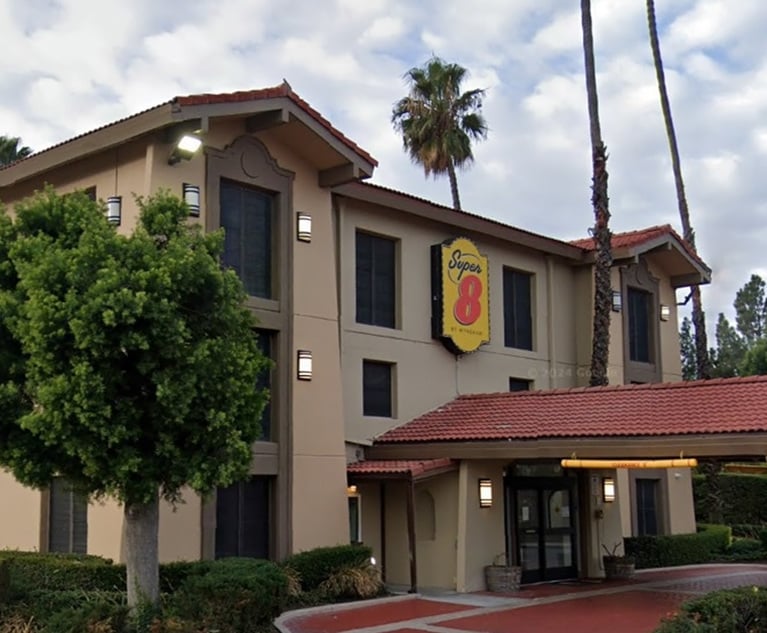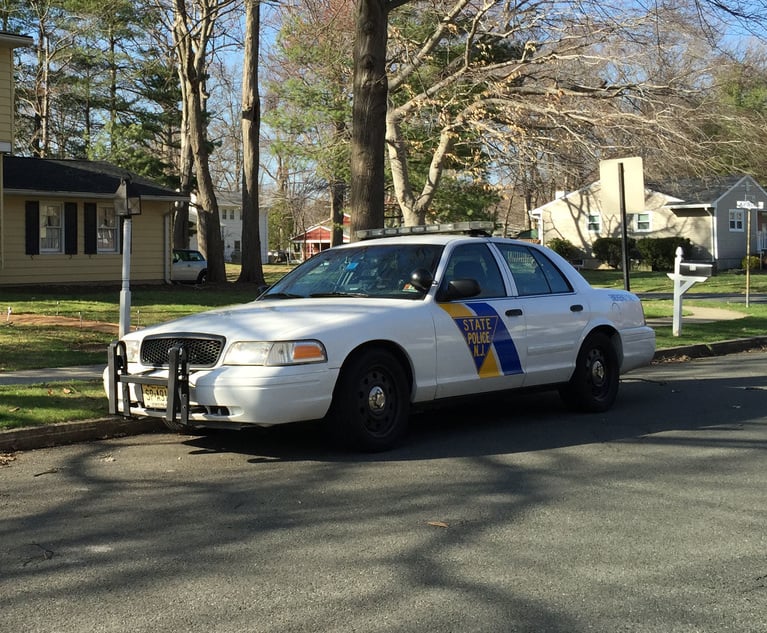Approved Opinions for he Week of September 25, 2017
20-2-4292 L.C. v. M.A.J., N.J. Super. App. Div. (Fisher, P.J.A.D.) (8 pp.) On the day of the final hearing, defendant filed an in limine motion that…
September 21, 2017 at 04:21 PM
3 minute read
20-2-4292 L.C. v. M.A.J., N.J. Super. App. Div. (Fisher, P.J.A.D.) (8 pp.) On the day of the final hearing, defendant filed an in limine motion that sought dismissal of plaintiff's complaint, arguing the alleged facts suggested only parenting differences and not domestic violence. The trial judge considered and granted the motion without taking testimony or providing plaintiff a full and fair opportunity to meaningfully respond. In condemning the filing of in limine motions that seek disposition of an action, particularly in domestic violence actions, and in finding the motion's rapid consideration and disposition–deprived plaintiff of due process, the court reversed and remanded for a final hearing. (Approved for Publication)
34-1-4252 The Palisades at Fort Lee Condominium Association, Inc. v. 100 Old Palisades, LLC, N.J. Sup. Ct. (Albin, J.) (36 pp.) A construction-defect cause of action accrues at the time that the building's original or subsequent owners first knew or, through the exercise of reasonable diligence, should have known of the basis for a claim. From that point, the plaintiff has six years to file a claim. A subsequent owner stands in no better position than a prior owner in calculating the limitations period. If a prior owner knew or reasonably should have known of a basis for a construction-defect action, the limitations period began at that point. Here, the Court cannot determine when the accrual clock commenced for each defendant based on the record before it and accordingly remands to the trial court.
14-8-4266 U.S. v. Poulson, 3rd Cir. (Rendell, J.) (24 pp.) Defendant appealed from two aspects of his judgment of sentence, arguing that the district court erred in calculating the number of victims who suffered a “substantial financial hardship,” and in imposing a five-year occupational restriction as part of his supervised release. Defendant was convicted after pleading guilty to one count of mail fraud, stemming from his participation in a scheme to trick homeowners facing foreclosure to sell him their homes, then defrauding investors in those distressed properties in a Ponzi scheme. The district court concluded that defendant's fraud totaled over $2.7 million, resulted in “substantial financial hardship” to more than 25 victims. The district court sentenced defendant to 70 months' imprisonment followed by three years' supervised release with a condition prohibiting defendant from working in the real estate industry for five years. The court first ruled that the district court properly exercised its discretion in determining the number of victims who suffered a “substantial financial hardship” under §2B1.1 of the sentencing guidelines. The court noted that a whether a victim suffered a substantial financial hardship would depend of the size of the loss relative to the victim's financial status and on the permanency of the loss; the court held there were no specific numbers demarcating a substantial hardship. However, the court concurred with defendant that the district court abused its discretion in imposing a five-year term barring defendant from working in the real estate industry as a condition of his three-year supervised release. The court noted that a three-year supervised release was the statutory maximum that could be imposed on defendant, and ruled that an occupation restriction as a condition of the supervised release could not exceed its term. Accordingly, the court remanded to correct the sentence to reflect the statutory maximums. (Precedential) [Filed Sep. 14, 2017]
This content has been archived. It is available through our partners, LexisNexis® and Bloomberg Law.
To view this content, please continue to their sites.
Not a Lexis Subscriber?
Subscribe Now
Not a Bloomberg Law Subscriber?
Subscribe Now
NOT FOR REPRINT
© 2025 ALM Global, LLC, All Rights Reserved. Request academic re-use from www.copyright.com. All other uses, submit a request to [email protected]. For more information visit Asset & Logo Licensing.
You Might Like
View All


Trending Stories
- 1Big Law Partner Co-Launches Startup Aiming to Transform Fund Formation Process
- 2How the Court of Public Opinion Should Factor Into Litigation Strategy
- 3Debevoise Lures Another SDNY Alum, Adding Criminal Division Chief
- 4Cooley Promotes NY Office Leader to Global Litigation Department Chair
- 5What Happens When Lateral Partners’ Guaranteed Compensation Ends?
Who Got The Work
J. Brugh Lower of Gibbons has entered an appearance for industrial equipment supplier Devco Corporation in a pending trademark infringement lawsuit. The suit, accusing the defendant of selling knock-off Graco products, was filed Dec. 18 in New Jersey District Court by Rivkin Radler on behalf of Graco Inc. and Graco Minnesota. The case, assigned to U.S. District Judge Zahid N. Quraishi, is 3:24-cv-11294, Graco Inc. et al v. Devco Corporation.
Who Got The Work
Rebecca Maller-Stein and Kent A. Yalowitz of Arnold & Porter Kaye Scholer have entered their appearances for Hanaco Venture Capital and its executives, Lior Prosor and David Frankel, in a pending securities lawsuit. The action, filed on Dec. 24 in New York Southern District Court by Zell, Aron & Co. on behalf of Goldeneye Advisors, accuses the defendants of negligently and fraudulently managing the plaintiff's $1 million investment. The case, assigned to U.S. District Judge Vernon S. Broderick, is 1:24-cv-09918, Goldeneye Advisors, LLC v. Hanaco Venture Capital, Ltd. et al.
Who Got The Work
Attorneys from A&O Shearman has stepped in as defense counsel for Toronto-Dominion Bank and other defendants in a pending securities class action. The suit, filed Dec. 11 in New York Southern District Court by Bleichmar Fonti & Auld, accuses the defendants of concealing the bank's 'pervasive' deficiencies in regards to its compliance with the Bank Secrecy Act and the quality of its anti-money laundering controls. The case, assigned to U.S. District Judge Arun Subramanian, is 1:24-cv-09445, Gonzalez v. The Toronto-Dominion Bank et al.
Who Got The Work
Crown Castle International, a Pennsylvania company providing shared communications infrastructure, has turned to Luke D. Wolf of Gordon Rees Scully Mansukhani to fend off a pending breach-of-contract lawsuit. The court action, filed Nov. 25 in Michigan Eastern District Court by Hooper Hathaway PC on behalf of The Town Residences LLC, accuses Crown Castle of failing to transfer approximately $30,000 in utility payments from T-Mobile in breach of a roof-top lease and assignment agreement. The case, assigned to U.S. District Judge Susan K. Declercq, is 2:24-cv-13131, The Town Residences LLC v. T-Mobile US, Inc. et al.
Who Got The Work
Wilfred P. Coronato and Daniel M. Schwartz of McCarter & English have stepped in as defense counsel to Electrolux Home Products Inc. in a pending product liability lawsuit. The court action, filed Nov. 26 in New York Eastern District Court by Poulos Lopiccolo PC and Nagel Rice LLP on behalf of David Stern, alleges that the defendant's refrigerators’ drawers and shelving repeatedly break and fall apart within months after purchase. The case, assigned to U.S. District Judge Joan M. Azrack, is 2:24-cv-08204, Stern v. Electrolux Home Products, Inc.
Featured Firms
Law Offices of Gary Martin Hays & Associates, P.C.
(470) 294-1674
Law Offices of Mark E. Salomone
(857) 444-6468
Smith & Hassler
(713) 739-1250







